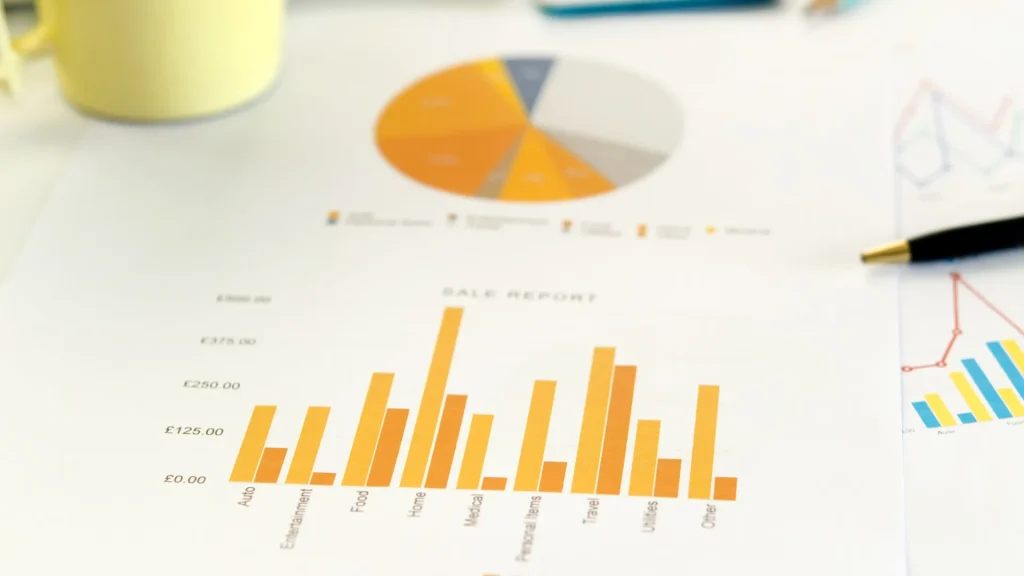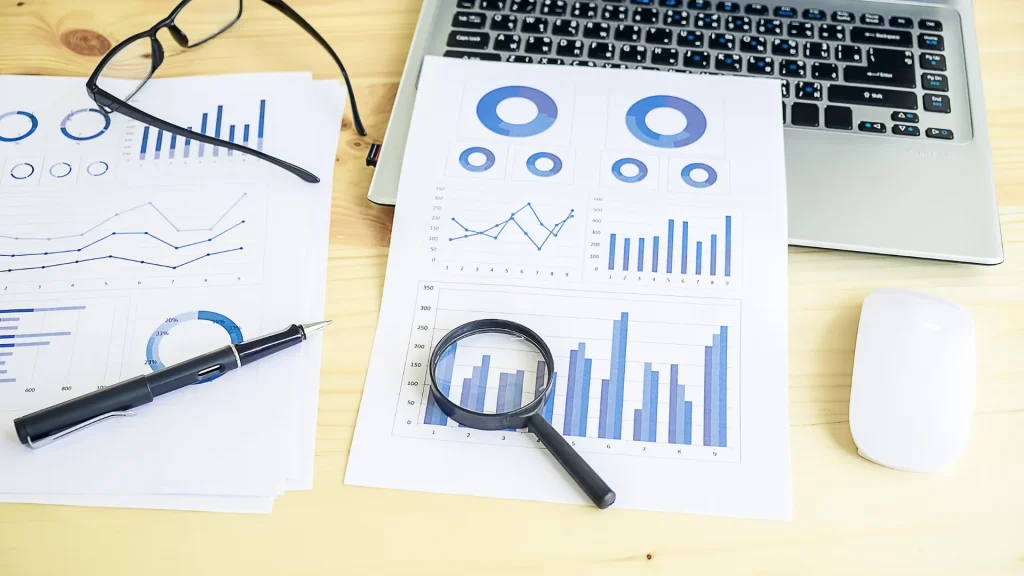A digital marketing report is a structured document that compiles data from various marketing activities, including SEO, social media, PPC campaigns, and email marketing, to measure performance.
It provides insights into key performance indicators (KPIs) and helps businesses evaluate their marketing effectiveness.
Why is Digital Marketing Reporting Important?
Marketing reporting is tracking and analyzing campaign performance to optimize future strategies. It enables businesses to make data-driven decisions, improve marketing ROI, and gain a competitive edge in the industry.
A well-structured report ensures a clear view of your marketing performance, making it easier to identify strengths and areas for improvement.
Who Needs Digital Marketing Reports?
Digital marketing reports are essential for agencies, digital marketers, business owners, and marketing teams. They help stakeholders understand the impact of their marketing efforts and justify budget allocations.
Whether working in marketing or managing a digital marketing firm, having well-documented reports is crucial for tracking success.
Easy Steps to Creating a Digital Marketing Report
Step 1: Define Your Reporting Goals and Objectives
Before creating a report, determine its purpose. Is it to track social media engagement, measure SEO performance, or analyze paid campaigns? Understanding your reporting goals will ensure you focus on the right marketing metrics.
Step 2: Identify Key Performance Indicators (KPIs)
Marketing KPIs, such as traffic sources, conversion rates, and cost per acquisition, are crucial for measuring marketing effectiveness. Selecting the right KPIs will help you track progress toward your business goals.
Step 3: Collect and Analyze Marketing Data
Gather data from various marketing platforms like Google Analytics, Facebook Ads, and email marketing software. Analyzing this data will provide insights into customer behavior, marketing results, and overall campaign effectiveness.
Step 4: Choose the Right Digital Marketing Reporting Tool
Using a marketing reporting tool can simplify data collection and visualization. Popular options include Google Data Studio, HubSpot, and SEMrush, which offer customizable dashboards and automated reports.
Step 5: Create a Clear and Visual Report Layout
A well-organized report should include graphs, charts, and tables to present data in an easy-to-understand format. Visual elements enhance readability and make it easier to communicate insights to stakeholders.
Step 6: Interpret Results and Provide Insights
Your report should explain what the numbers mean beyond just presenting data. Analyzing trends and marketing effectiveness helps you make strategic adjustments to improve campaign performance.
Step 7: Present the Report to Stakeholders and Take Action
Once the report is complete, please share it with your team, clients, or management. Highlight key takeaways and actionable insights to ensure informed decision-making for future marketing strategies.
Essential Components of a Digital Marketing Report
Overview of Marketing Performance
A summary of how well marketing campaigns performed across various platforms.
Traffic Sources and Audience Insights
Breakdown of website traffic from organic search, social media platforms, paid ads, and referrals.
SEO and Organic Search Performance
SEO report insights, including keyword rankings, organic traffic, and backlink analysis.
Paid Advertising Metrics (PPC, Social Media Ads)
Evaluation of ad spend, click-through rates (CTR), cost-per-click (CPC), and return on investment (ROI).
Social Media Engagement and Performance
Analysis of social media platforms’ reach, engagement, and follower growth.
Email Marketing Metrics and Open Rates
Tracking email campaigns, including open rates, click rates, and subscriber growth.
Conversion Rates and Lead Generation
Assessment of lead generation efforts and customer conversion rates.
Marketing ROI and Cost Analysis
Measurement of how effectively marketing budgets are being utilized.
Competitor Analysis and Benchmarking
Comparison with industry competitors to identify opportunities for improvement.
Future Marketing Strategy Recommendations
Insights on optimizing future marketing campaigns based on past performance.
Digital Marketing Report Templates
Importance of Using Pre-Made Report Templates
Types of Digital Marketing Report Templates
SEO Report Template
A detailed analysis of search engine rankings and optimization strategies.
PPC Advertising Report Template
Insights into paid ad performance, budget utilization, and return on investment.
Social Media Marketing Report Template
A report covering social media engagement, reach, and audience growth.
Email Marketing Performance Report Template
Tracking email open rates, conversions, and subscriber retention.
Multi-Channel Digital Marketing Report Template
A comprehensive report combining various marketing channels.
Customizing a Digital Marketing Report Template
Modify templates to include specific metrics relevant to your business objectives.
Best Digital Marketing Reporting Tools and Software

Features to Look for in a Marketing Reporting Tool
A good reporting tool should offer automation, integration with various platforms, and visual reporting capabilities.
Top Digital Marketing Reporting Tools
Google Analytics for Web and SEO Reports
Google Data Studio for Custom Dashboards
HubSpot for Marketing Automation Reports
SEMrush for Competitive Analysis
Ahrefs for SEO and Backlink Analysis
Hootsuite for Social Media Reporting
Moz for SEO Performance Tracking
Facebook & Google Ads Reports
How to Choose the Right Marketing Reporting Software?
Evaluate tools based on your business needs, budget, and integration capabilities.
Also Read: Digital Marketing Recruitment Agency: Find Top Staff & Talent
Analyzing Digital Marketing Report Data
Understanding Key Metrics and Performance Indicators
Key metrics such as engagement rates and conversion rates help determine campaign success.
Interpreting Data for Better Marketing Decisions
Use insights from reports to refine and enhance marketing strategies.
Spotting Trends and Patterns in Digital Marketing Reports
Identify seasonal trends, customer behavior shifts, and emerging opportunities.
How to Use Data to Optimize Future Campaigns?
Adjust marketing strategies based on data-driven insights for improved performance.
Common Mistakes in Digital Marketing Data Analysis
Avoid data misinterpretation by using accurate reporting tools and cross-referencing data sources.
Digital Marketing Reporting Best Practices
How Often Should You Generate Reports?
The reporting frequency depends on business goals—weekly, monthly, or quarterly reports are standard.
Ensuring Data Accuracy in Reports
Use reliable sources and cross-check data to maintain accuracy.
How to Make Reports Easy to Understand?
Use simple language, clear headings, and data visualization techniques.
Visualizing Data with Charts, Graphs, and Dashboards
Visual elements enhance clarity and make complex data more digestible.
Keeping Reports Concise and Actionable
Focus on insights rather than overwhelming readers with excessive data.
Automating Digital Marketing Reports for Efficiency
Utilize automation tools to streamline the reporting process and save time.
Engaging Stakeholders with Data-Driven Storytelling
Present data in a compelling way to ensure stakeholders take actionable steps.
Future Trends in Digital Marketing Reporting

AI and Machine Learning in Digital Marketing Analytics
Advanced AI tools are revolutionizing data collection and analysis.
The Role of Automation in Reporting
Automated reports increase efficiency and reduce human errors.
Predictive Analytics for Marketing Success
Predictive models help anticipate customer behavior and market trends.
Emerging Tools and Technologies in Digital Marketing Reporting
New software solutions are continually improving reporting capabilities.
The Future of Data-Driven Decision-Making in Marketing
Businesses will increasingly rely on data-driven strategies for growth.
